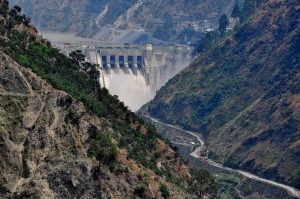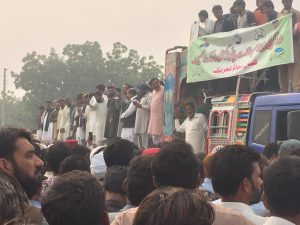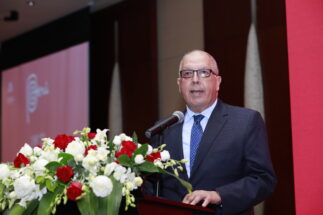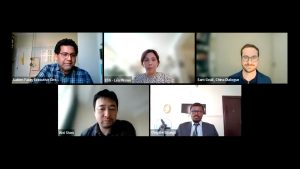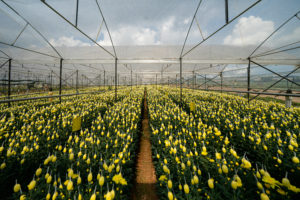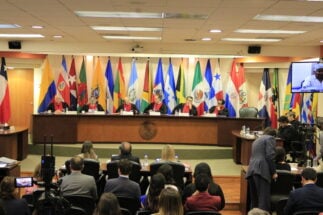More than 80% of the population in Pakistan faces ‘severe water scarcity’. Without change, this is projected to increase. With the water crisis looming over the country, Umer Karim, a development sector professional, sat down with The Third Pole.
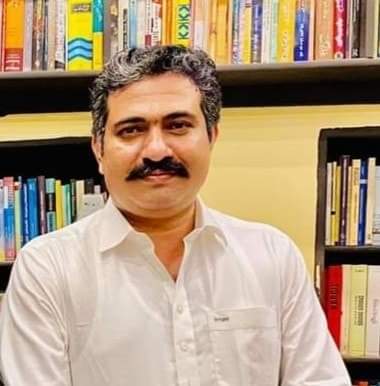
Karim has been working in the field of irrigation and water management for more than 20 years and is a consultant with public and private sector organisations, as well as a regular guest speaker and media commentator.
He discussed dams, Pakistan’s water and energy crisis, and the challenges of managing data and water. The interview has been edited for length and clarity.
Can you explain the debate around dams in Pakistan?
In 2010, all the provinces had a consensus on the Diamer Bhasha dam [a dam being built in northwest Pakistan, which will be one of the highest in the world when finished]. However now the project is taking a lot of flak. It is difficult to understand why they signed the agreement, if it is now believed that we will suffer and dry up as a result.
Some people propose that small dams should be built in provinces. Please invite them to visit Chotiari reservoir, a small dam built on the Nara Canal in Sindh in 1996. No doubt it’s very helpful and caters to the needs of downstream areas of Umerkot and Tharparkar whenever there is a shortage of water. But people living near the banks of this dam are badly affected by waterlogging, salinity and land degradation. Small dams may be valuable in sustaining communities, but they need proper operation and maintenance plus remedial measures for waterlogging and seepage.
Usually, dams are built in areas where issues of waterlogging and salinity are expected to have the least impact. Tarbela dam, for example, recharges the area’s water tables and keeps them fresh.
One of the disadvantages of dams is that most of the water is diverted for agricultureUmer Karim
Among people interested in the environmental pros and cons of hydropower, there are plenty of discussions, but technical or scientific research or data is not included. The narrative around hydros, therefore, remains superficial.
This year, we did not have water [stored in] dams. Tarbela was emptied for repair work on its tunnels during the dry – winter – period, and Mangla had to provide support for those areas in Pakistan’s upper reaches. We are essentially on a direct natural flow of the river, which remained lower than average due to low temperatures at glaciers, and this created multiple problems especially for lower riparian areas.
Water storage in dams is not only for consistency but also provides a buffer, which means we have a backup for water all year round. Dams serve the same purpose that water tanks do in homes for storage.
Given the current power and electricity crisis in Pakistan, what do you think is a sustainable way to produce energy?
There are three things needed for the progress of this country. Cheap, sustainable energy is the first, followed by low-cost manpower and inexpensive raw material.
Today as a nation we have created a serious economic imbalance and now are experiencing serious economic crises. Pakistan currently has a circular debt of 1.6 trillion Pakistani rupees (USD 7.7 billion) in the oil and gas sectors; it is close to PKR 2.5 trillion (USD 12 billion) for the power sector only. In 2013, the then-federal government cleared the circular debt and brought it to zero, but by 2017 it had again gone up to PKR 480 billion and today it is multiplied by four times. In comparison, the total cost of constructing Diamer Bhasha is around PKR 1.5 trillion. In the entire economic crisis of our country, the main issue is our circular debt.
Circular debt in the energy sector refers to the inability of the government, consumers, suppliers and distribution companies to manage liquidity, where each of the stakeholders owes the others, making it difficult for the financial system to manage.
From 1975 [for almost 20 years] we did not build any dams. Further we started [to fall] in love with thermal power generation, importing fuel and coal at an immense environmental cost – more than hydropower.
Nor can solar or wind power totally substitute the need, and they have their own environmental costs. Wind turbines are made of fiberglass; by the way, where will we dump them after 20 years, when they reach the end of their lifecycle? There are also additional costs of buying such technology from overseas, and the heavy interest that we incur. Most importantly, if these renewable sources are unable to provide power – due to lack of wind or light – when it is needed, do we again have to instantly restart thermal plants?
Are you saying that no matter how you produce energy, there will be some environmental damage?
Yes.
Do you think hydropower will provide a stable, cheap and local source of energy, and this will help deal with circular debt?
The problem of circular debt started when we opposed affordable hydropower and switched towards thermal generation with expensive fuels… further, this electricity being so expensive, we tried to subsidise it; even then, the actual cost was not recovered and circular debt started rising.
What about the link between irrigation for crops and hydropower dams?
Water and agriculture are tied together; there are specific times when we need water for crops, as with urban and industrial water supplies. Due to dams, the reliability of water flow increases, but my hypothesis is so does its use. In particular, our agriculture consumption has gone up. It is increasing constantly, and we are not measuring the cropped area properly, so nobody knows what is happening. But we do know that the number of sugar mills in the country has continuously increased in the past 30 years.
We must bear in mind that when we gauge the percentage of water used per sector, over 90% is used by the agricultural sector and the rest by urban and industrial users in Pakistan.
Earlier, [there were rules for] cropping intensities, cropping patterns and water allowances. This used to be a blessing for equitable water distribution, specifically when the resource was limited and uncertain like this year. The construction of dams facilitated disorganised expansion and now we are facing the consequences. Our rivers are dried out and wetlands are degraded.
I am convinced that one of the disadvantages of dams is that most of the water is diverted to be used for agricultural purposes.
I will give you an example. The command-designed cultivated area of Punjab according to the Punjab Irrigation Department is 21.71 million acres, but according to a report of the Bureau of Statistics in 2015, the province is cultivating over 26.48 million acres of land and its aquifer is facing serious depletion issues. Sindh and Khyber Pakhtunkhwa have seen the same trend but Balochistan is the end sufferer. Its command area was 2.69 million acres, but through remote sensing it is assessed that it is cultivating only 2.01 million acres. For the whole country, our designed cultivated area is 38.68 million acres; in 2015 we reported 38.43 million acres, but through land cover assessments for that year it is found that we actually cultivated 46.58 million acres.
The missing data – and its management – on how much is cultivated and produced, what are domestic requirements and how much can be exported is the actual problem.
This year we faced more drought than usual, particularly in Cholistan. What is happening there?
Pakistan is now officially a drought-stricken country. Cholistan is a desert area in Punjab. I come from the similar neighbouring district of Tharparkar in Sindh. Droughts are not new in these areas, but urbanisation and other reasons have made them tougher.
In the past, after the monsoon, people in the desert would plant rain-fed crops, and afterward in dry periods they migrated towards settled areas with their livestock. Their siblings took care of the cattle grazing in irrigated command areas, while the men worked with landlords. The following year, when the monsoon season had started, they’d move back to their original areas with well-fed healthy livestock and earnings. It seems this has changed. These days after new developments and improved accessibility, men leave for work in urban areas while women and children stay back in Thar.
There aren’t any canals or rivers providing water to Cholistan. It remains dry unless there is a downpour. Instead of politicising these issues and provinces competing about the shortage of water, our focus should be on alleviating the problems of the local communities. I have a success story from our area, where Sindh Irrigation Department has done some great work by providing drinking water to desert communities from the Nara Canal, through pipelines and pumping stations. This has revitalised people’s lives. The same kind of intervention can benefit the people of Cholistan and other areas of Tharparkar.
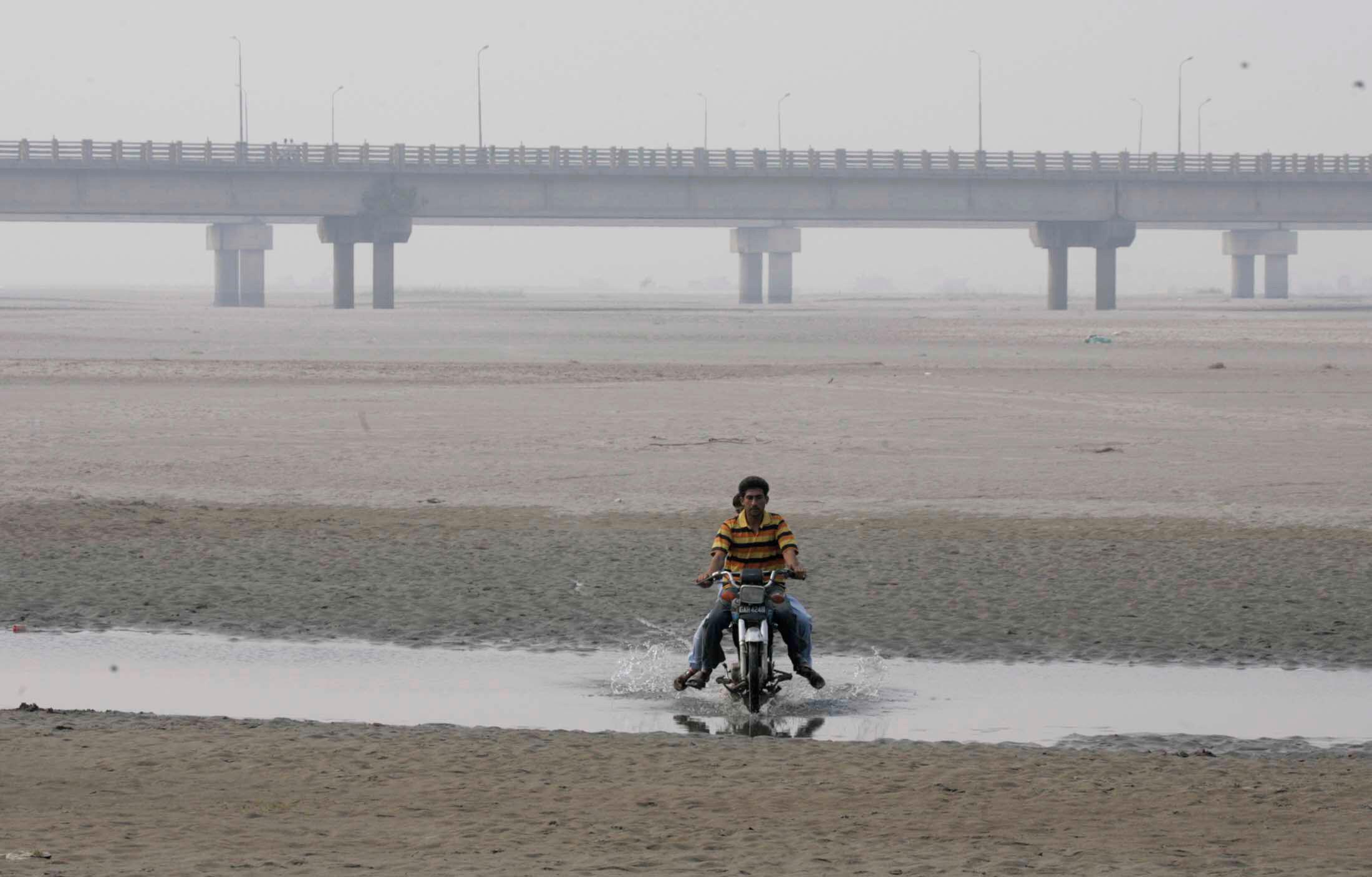

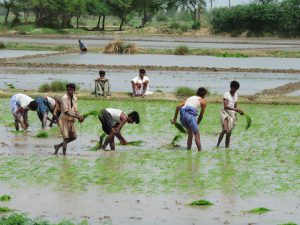
![The Indus at the site of the proposed Diamer-Basha dam [image by: Water and Power Development Authority, Pakistan]](https://dialogue.earth/content/uploads/2017/05/Indus_Diamer_Basha_Dam_Site_Image_WAPDA-300x169.jpg)
